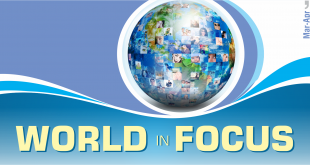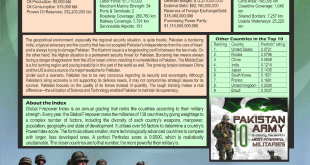“Our progress as a nation can be no swifter than our progress in education. The human mind is our fundamental resource.” — John F. Kennedy (35th President of the United States)
The greatest asset of an organization is its human resources. All organizations are made up of people and there is no management activity that might not be touched by the Human Resource Management (HRM) as it is the function within an organization that focuses on the recruitment of, management of, and providing direction for the people who work in an organization. All of the processes and programmes that are touched by people are part of the HR kingdom.
Human resource management is a contemporary, umbrella term used to describe the management and development of employees in an organization. It has become the dominant approach to people management throughout much of the world. Also called personnel or talent management, human resource management involves overseeing all things related to managing an organization’s human capital. Here is a brief analysis of the HRM theories:
Organizational life cycle theory
Cameron and Whetton advanced organizational life cycle theory which characterizes an organization’s development from formation, growth, maturity and decline to death. According to the theory, the driving force in all these stages is the nature of workforce. At the maturity stage, the organization cannot continue to grow or survive if there is no organizational structure that supports human resource creativity, innovation, teamwork and high performance, that will withstand pressure from competitors.
Role behaviour theory
Role behaviour theory aims to explain and predict the behaviour of individuals and teams in organizations, which, in turn, informs managers for the purposes of decision-making, and what steps they take on people management as well as the expected consequences thereupon. Some of the key ideas focus on the need to improve the working environment including the resources in order to stimulate new behaviour in employees in order for them to cope with the emerging demands. It includes the use of rewards to induce and promote positive work behaviour, and punishments to control the negative one.
Resource dependency theory
One of the challenges faced by managers during the economic recession in the 1970s was how organizations can best acquire scarce resources and effectively utilise them in order to remain competitive in the market. The ability to utilise one’s own resources (including financial, technological and labour), and acquire more from the external environment was one of the areas of concern in many organizations. The more organizations were able to harness resources, the more competitive they became. Therefore, resources were seen as the essence of organizational power. However, overdependence on external resources appeared to be risky owing to the uncertainties that cannot be controlled by the organization. Concerning useful labour, the emphasis shifted to seeing employees as scarce resources that should be acquired, effectively utilised, developed and retained.
Institutional theory
The word ‘institution’ means different things to different people; depending on academic and professional orientation. However, it is a discipline that combines politics, law, psychology, public administration and economics, among other things, in order to explain why certain decisions are made or actions taken and their impact on the organization. Commons defines ‘institutions’ as ‘collective action in control, liberation and expansion of individual action’. Collective action covers areas such as the control of the acts of individuals, which result in either gains or losses in the process of executing joint transactions. Control is about prohibition of certain acts in such a way that the control of one person or organization leads to liberty of the others and, hence, better gains.
Transaction cost theory
Transaction cost theory is based on the economic view of the costs of conducting business transactions. The thesis is: companies will grow if the costs of exchanging resources in the company are cheaper in comparison to competitors. Such costs include bureaucratic employment structures, procedures and the enforcement of employment contracts. For that matter, employment relationships that may lead to high costs of exchange should be minimized.
Comparative advantage theory
The main architect of comparative advantage theory is the noted economist David Ricardo who talked of the specialization and division of labour among nations and firms. Ricardo postulated that nations should produce goods in which they have a domestic comparative advantage over others. Since then, organizations and nations have focused on strengthening internal capacity in order to have more advantages relative to competitors and hence to reduce production and distribution costs per unit.
General systems theory
No organization can survive without interacting with its environment. Organizations get inputs from the external environment; they are processed and the outputs are released to the external environment which provides feedback to the organization. Customers, who are part of the environment, will give feedback by using different means including value judgement on quality, price, style and fashion. Therefore, organizations are seen as systems with components and parts that are related and interconnected in such a manner that failure of a component or part leads to the failure of another. The system approach to understanding organizations considers the human resource department as a component of the organization’s system that also has other departments such as accounting, engineering, marketing, etc. In order for the organization to grow and remain competitive, each department, section or unit should support the other.
Human capital theory
Human capital theory was initially developed by Becker and it has grown in importance worldwide because it focuses on education and training as a source of capital. It is now widely acknowledged that one of the key explanations for the rapid development of Asian countries in the 1970s and the 80s is high investment in human capital. Human capital theory changes the equation that training and development are ‘costs the organization should try to minimize’ into training and development as ‘returnable investments’ which should be part of the organizational investment capital. Therefore, human resource training and development decisions and evaluations musty be based on clearly-developed capital investment models.
Strategic contingency theory
There is a growing body of knowledge stipulating that since an organization operates and thrives in a complex environment, managers must adopt specific strategies which will maximise gains and minimise risks from the environment. In this premise, the theory contends that there is no one best strategy for managing people in organizations. Overall corporate strategy and the feedback from the environment will dictate the optimal strategies, policies, objectives, activities and tasks in human resource management.
 Jahangir's World Times First Comprehensive Magazine for students/teachers of competitive exams and general readers as well.
Jahangir's World Times First Comprehensive Magazine for students/teachers of competitive exams and general readers as well.



